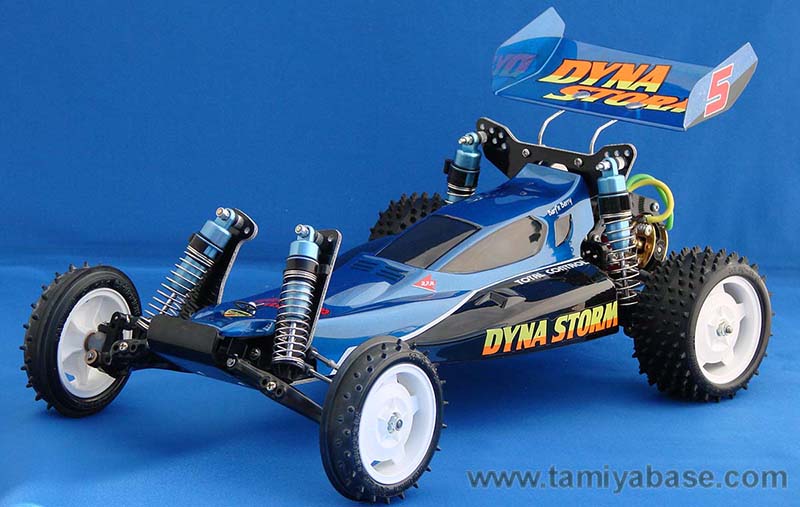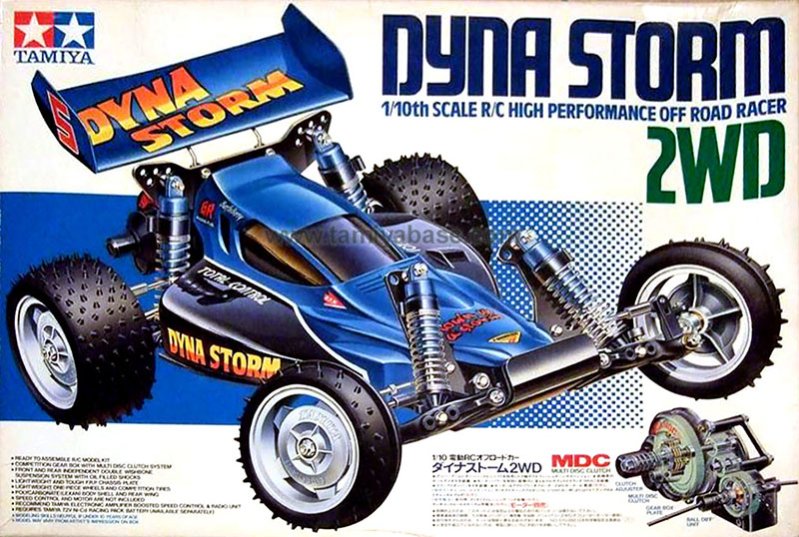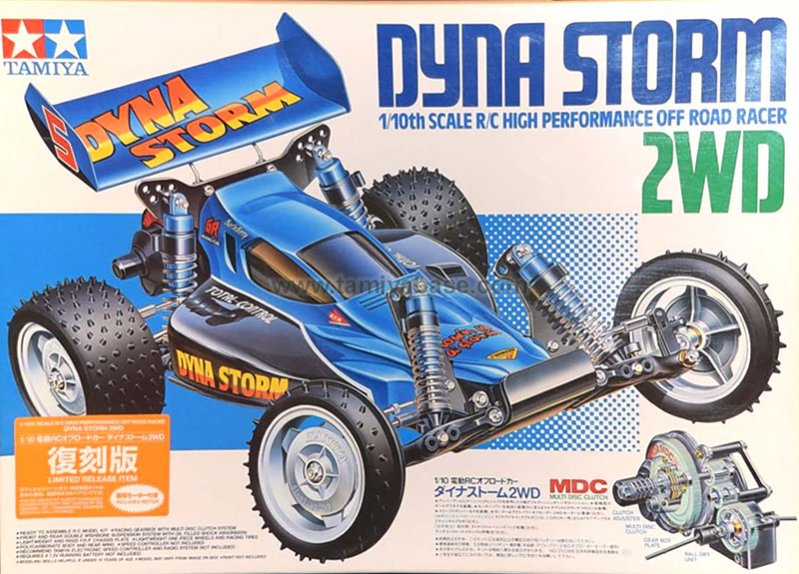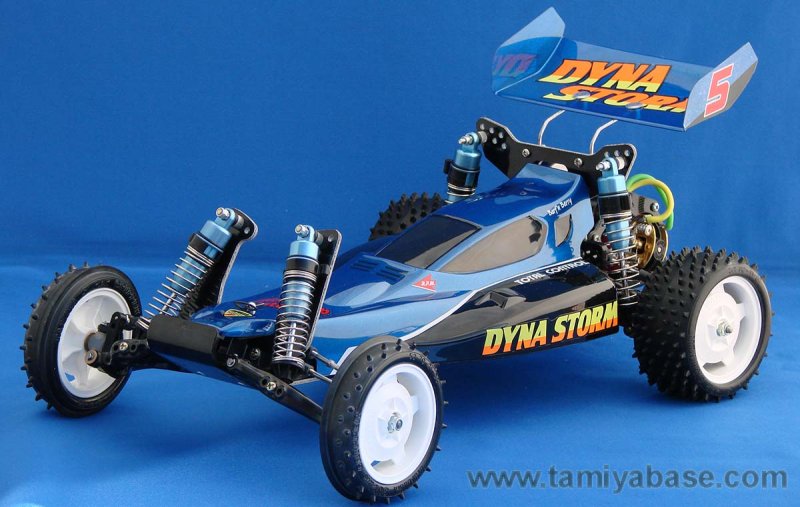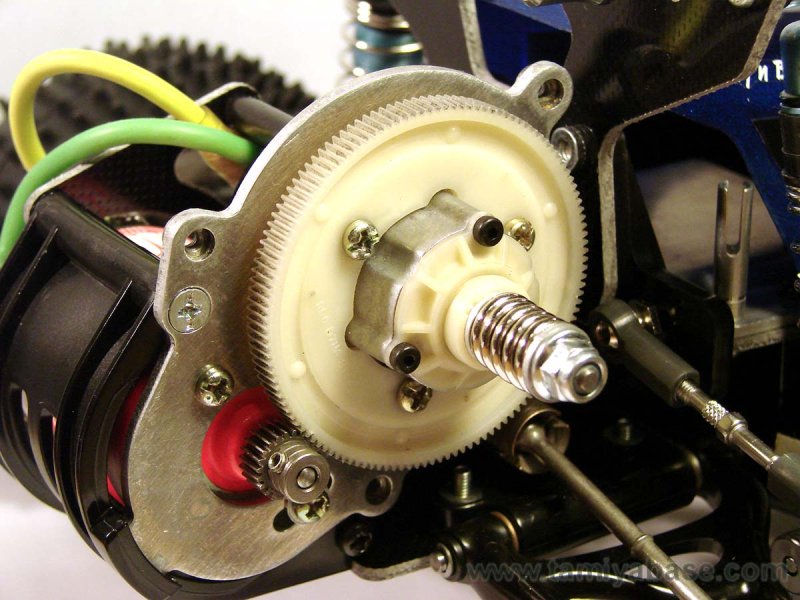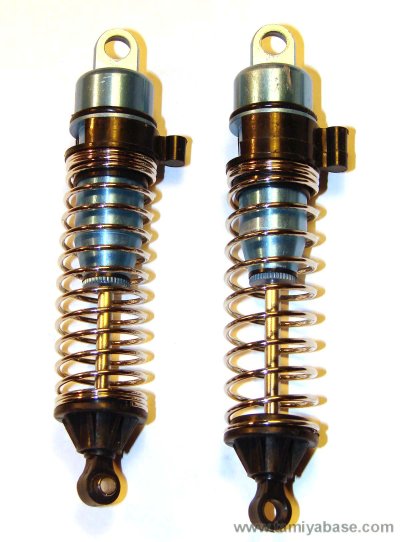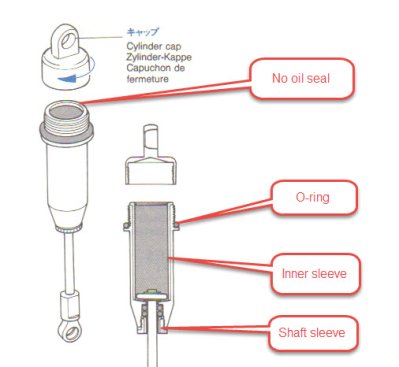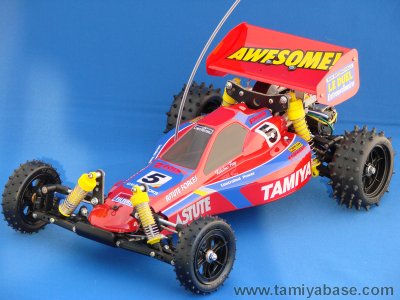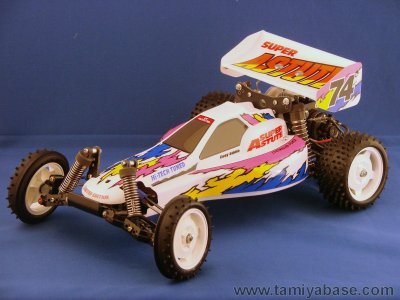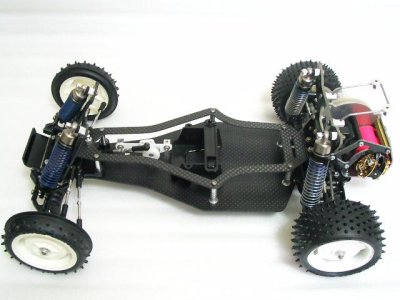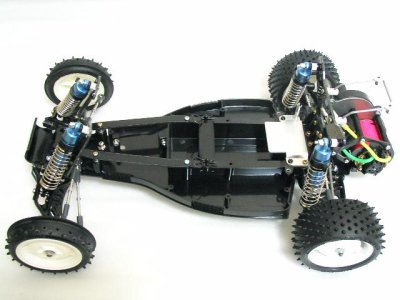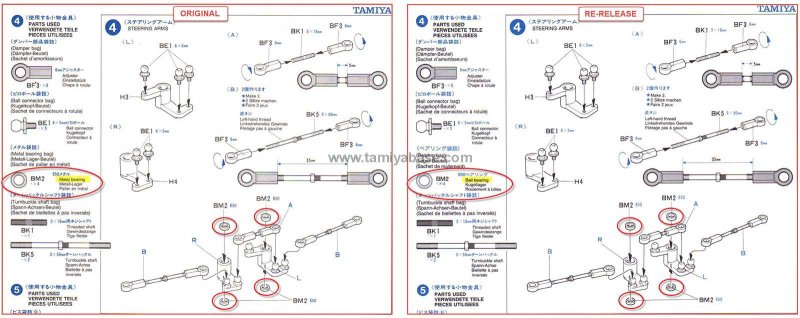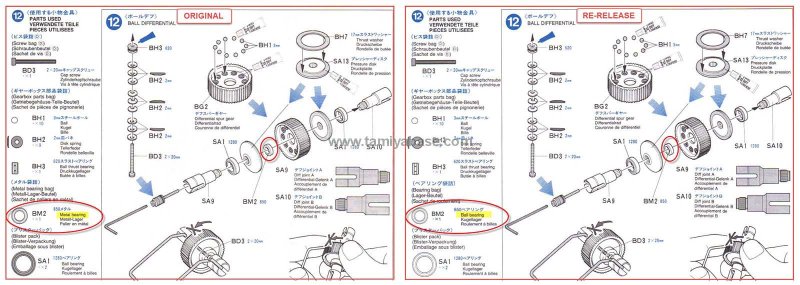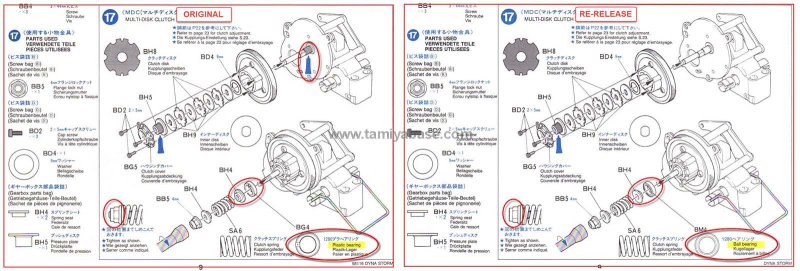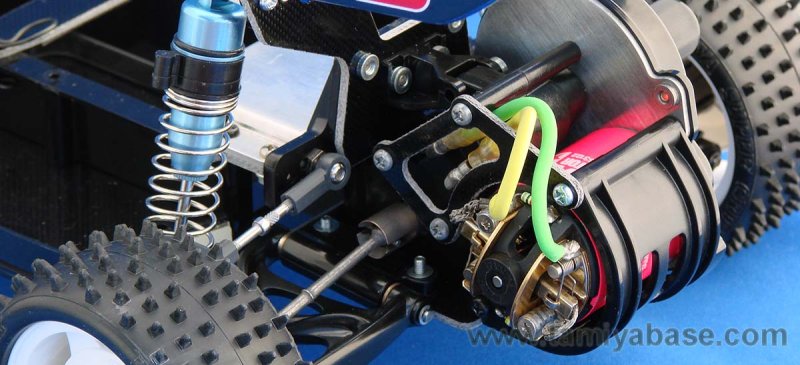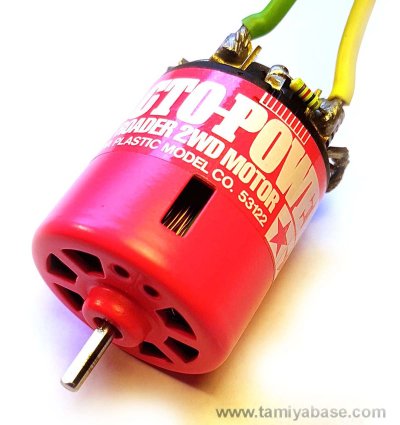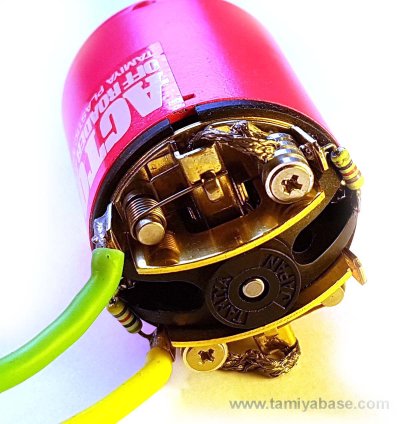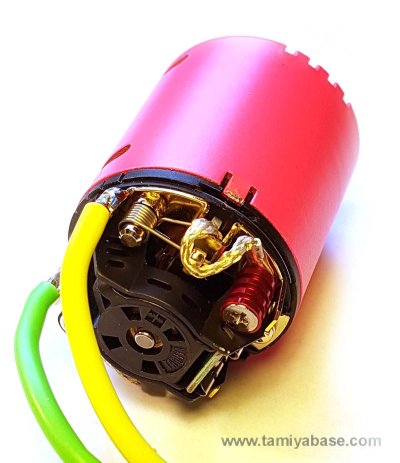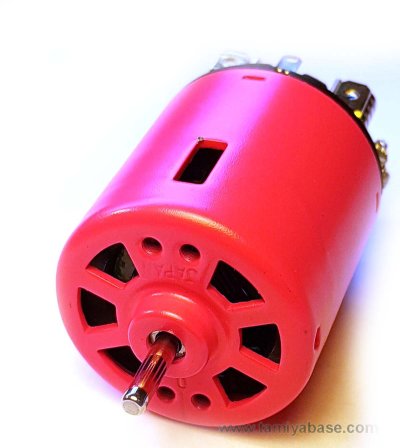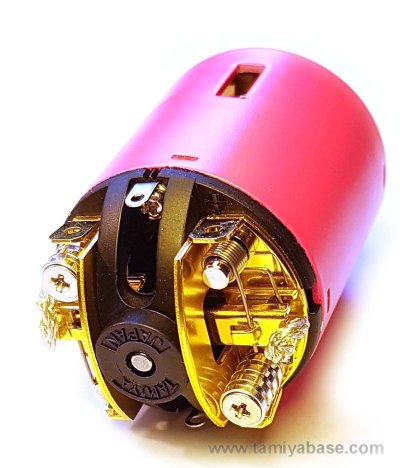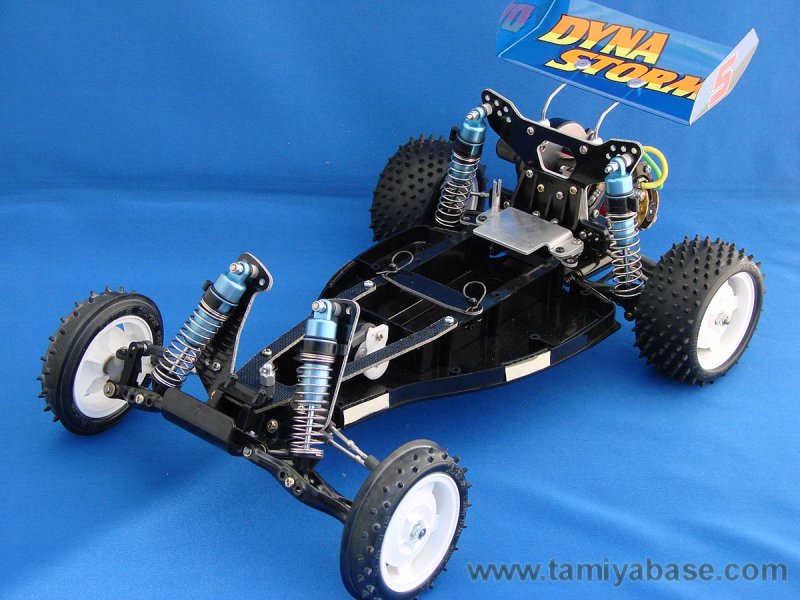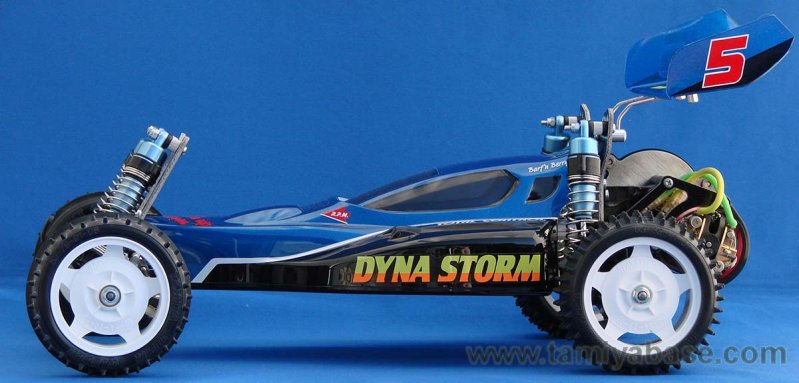After restoring the Dyna Storm, I thought there were just too much to know about this special model to not write an article about it. You can see the entire restoration thread here: Dyna Storm resto thread
Which one?
First you need to know there are two Dyna Storm kits out there. Tamiya released the original kit number 58116 in December 8th, 1992, just in time for Christmas.
However, looking at the 30000 Yen price tag, in 1992, it was not likely to appear under many Christmas trees. Compared to popular models released in 1992, the Dyna Storm cost twice as much as the Group C Nissan R91CP and 6000 Yen more than the Terra Conqueror which included a Dynatech 02R.
The other Dyna Storm is the reissue with kit number 49190:
The kit number indicated it is from the “Limited Edition” series, while the original were in the normal RC model category. The 49190 was released October 31st, 2001. The price was raised a modest 2000 Yen, making it three times more expensive than a TL01 Porsche VIP released in the same period.
I will come back to the differences between these two kits, but let us first look at the Dyna Storm in general.
What is it?
The Dyna Storm is a 2WD high-end buggy aimed at the competition market of the time. Tamiya fans still consider the Dyna Storm as a great runner, even if it is 26 years old. There are many unique features on this model and some first time designs as well.
Let’s have a look at them.
TTC Clutch
The most bespoken part of the Dyna Storm is probably the slipper clutch mechanism. Just one year earlier, Tamiya released the Super Astute with the now well-known TTC (Tamiya Traction Control) clutch system. In spite the fancy name the system was just a single plate clutch. After some further development in the TRF 211X, the Dyna Storm clutch system was more accurately named “Multi-Disc Clutch”.
There are three clutch disks and five pressure plates inside the metal housing, making justice to the name. The purpose of the clutch is mainly to smooth out the power transfer to the ground, limiting wheel spin but also protecting the motor/gears from excessive forces.
Front Suspension
Another distinct feature of the Dyna Storm is the front suspension. Like modern competition buggies, the Dyna Storm has a rearward slanted suspension. In technical terms called kick-up. Combined with the caster angle, the kick-up will affect steering and handling of bumps. The more kick-up, the better handling of bumps, the less kick-up more aggressive steering response.
Dampers
Talking about the front suspension, one cannot write about the Dyna Storm without looking closer at the dampers.
Tamiya call them “Sleeved Dampers” and they are unique to the Dyna Storm kits and the debate is still on of which is best, the sleeved or the high-caps. The Sleeved dampers were developed for the TRF211X prototype but then in a slightly longer configuration. The name comes from the plastic (Teflon?) sleeve inside the aluminium body put there to reduce friction. There is also a small sleeve inside the lower seal, where the damper rod exits from the body.
The Sleeved damper is also missing the inner rubber seal we as we know it from the CVAs and High Caps. The Sleeved damper simply does not have a seal between the air and the oil. By design, the damper will mix the oil and trapped air, changing the physical character of the fluid and creating the smooth damping effect.
The last distinct feature worth mentioning here is the chassis’ sleek design. The chassis tub itself is very low but the ground-clearance is higher than most buggies of the time. Looking at the layout inside the tub, the battery is positioned longitudinally with the steering servo in front of it, leaving space for the receiver and ESC on each side, or a combo-unit on the top of the battery. The design is clearly focused on creating balance.
Heritage
The Dyna Storm has genes from the first serious 2WD buggy from Tamiya, the over-engineered Astute (1989). Tamiya developed the Astute further into the Super Astute (1991) and the Dyna Storm followed the year after.
However, there is a second line of Tamiya genes influencing the Dyna Storm. In the early 90’s TRF (Tamiya Racing Factory) was working on developing a new prototype, the TRF 211X based on the Super Astute. This was at the same time as when the Dyna Storm was released and you can see obvious similarities between the two.
The TRF211X was only made in 100 examples and only given to TRF drivers.
The differences
Whenever there is an original and a re-re, every Tamiya fan will ask; what is the difference between them? “Surprisingly little” is the short answer in this case, but let us look at the details.
Kit content
Looking at the kit content, there is one major difference. The original kit did not include any motor, but the reissue did.
After a quick glance, the models look identical, and you have to tear them apart to find the differences (or compare the manuals, as I did). Starting from the front you will find the first difference in the steering arms.
Steering arms bearings:
The four 850 bearings are ball bearings in the reissue, while the original came with bronze metal bearings.
Diff bearing
To find the next difference you have to move back to the gearbox and open the diff. You will find that the reissue use a 850 ball bearing as the centre bearing for the gear, while the original has a bronze metal bearing.
Clutch bearing
Also inside the gearbox is the slipper clutch, and again Tamiya made a small bearing-related change once again.
On the original, a plastic bearing supports the clutch spring but on the reissue; a 1280 ball bearing replaces the plastic bearing. Because of the ball bearing, the inner spring support was flipped around, and the tensioning of the spring slightly reduced.
That’s all! There are no other differences. Six metal bearing upgraded to ball bearing in the reissue, changes not even visible without taking the model apart.
Motors
I cannot help mention something about motors for the Dyna Storm. “Tamiya Pink Motor” has become a brand within the Tamiya community, and it is largely because of the Dyna Storm.
As mentioned the original kit did not include a motor. This is usual for competition buggies. Kit manufacturers assume racers will select motor independently and based on class rules, so including one in the kit would not make sense. However, the reissue kit did include a motor. Keeping in mind the reissue came out in 2001, the Dyna Storm were already 9 years old, and hardly a serious competition buggy anymore, so adding a motor now makes more sense.
58116 original motor
The 58116 original kit did not include a motor, but in the manual, Tamiya recommended the Acto-Power Off Roader 2WD (53122, released 1992) which has a distinctive pink painted can. It has 14 turns, adjustable timing, is ball-raced and re-buildable.
You can read more about the 53122 motor by clicking here.
49190 reissue motor
The reissue kit included a pink motor as well, but this one is something of a mystery. It has not been sold separately and only has a 7-digit part number;. The can is from the Super Stock giving no adjustability and limited service access. The rotor is the same as the 53122 Acto-Power pink motor.
Read more about this motor by clicking here.
The third pink motor
The third pink motor is a typical Tamiya thing. Extensive research indicate that this motor was only released at Tamiya events in Japan. It does not have an item number, and the performance data is not known. However, inspecting the motor reveals it's the same parts as used in the original 53122 Acto-Power Off Roader 2WD, just without the label.
Read more about this motor by clicking here.
Still this motor was released 9-10 years after the release of the original 53122 pink Acto. I guess we can say this is the first (known to me) reissued Tamiya motor :-)
Restoring a Dyna Storm
Finding one
In order to restore a Dyna Storm, you have to find one first. If you, like me, want your restorations to be as original as possible, you might have a challenge to find a good starting point. Many of the dyna Storms were used in racing and were for that reason modified to perform their best. In particular wheels, dampers and body are often swapped for aftermakert ones. On the other hand, since the dyna Storm is popular amontg Tamiya fans, they are taken care of, but those usually come with an elevated price tag.
Working on them
One of the first things I noticed while restoring mine was the great build quality. Tamiya is known for their quality of both parts and instructions regardless of which kit, but I can see and feel an even better fit and even better attention to detail on the Dyna Storm. Everything just fits, and it fits tight, not too tight, just right. The gearbox, suspension arms and of course the dampers are examples where you can feel that extra effort that has gone into the design and production.
Parts availability
Surprisingly, it is not that hard to find parts for the Dyna Storm. Many of the plastic parts are still available from retail sellers. You can even find part sprues date-stemped in 1991/1992 making them original parts.The FRP parts are also available new to a large extent.
In my experience the hardest part to find were the correct tyres. The front rib-spike tires were tough to find at the time of my restoration, but of course with the Super Astute reissue (December 2018, kit number 47381) they will be available again. The rear Spire Spikes are currently “impossible” to find, but depending on what rear tyres the reissue Super Astute get, that might change. Square Spikes are available because of recent reissues, and they look very similar sto Spire Spikes, but for a purist like me, restoring an original without the correct tyres hurts deep inside. As you see from the pictures above, I had to use the Square Spikes.
If your model due for restoration is missing the sleeved dampers, you are in trouble. They are unique to the Dyna Storm, but were at some time available as hop-up parts. If you find a set today, it's like winning the lottery. So, make sure the Dyna Storm you buy has original dampers.
Verdict
To conclude, the Dyna Storm has a large fan base among the vintage Tamiya community. There are not too many around, but if you are lucky to get hold of one you should be able to restore it or even run it if you stock up on parts first.
It is definitely collectable; “everybody” wants one because of its competition pedigree and of course, the very good looks. It also has some tech-details that are both unique and cool, making it a nice talking point, vintage racer or smashing shelf queen, whatever fancies you.
_____________________________
Written by Larbut



